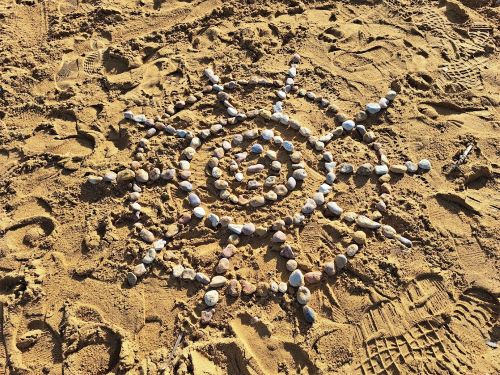Malta is one of the world’s smallest countries! You can drive across the main island in about an hour!
First and foremost, after more than a decade of living through loooong, gray—if not outright dark—winters in the Scottish lowlands, any country that gives me enough sunshine in January to nourish my bones and mind with vitamin D deserves a spot on the top list of destinations I want to visit. A country whose tourist slogan proudly states – 300 days of sunshine a year automatically belongs high on that list. Malta it is!
On our last trip, we paid far too much attention to retouched and hyped-up social media ramblings (more on that in our story about the Isle of Skye). Based on that, we set some unrealistic expectations and, of course, ended up disappointed when we finally reached our desired destination. This time, we decided to return to the nearly extinct practice of using libraries and travel guides to prepare for our first real vacation of 2025.
Four hours on the plane was a fantastic opportunity to study the guides. Everything was clear—every part of Malta offers a new source of excitement, everything is a must-see, and everything is easily accessible via public transport or rental cars. Not one, but two travel guides in the form of actual books, plus several online sources aimed at keeping things interesting for teenagers.
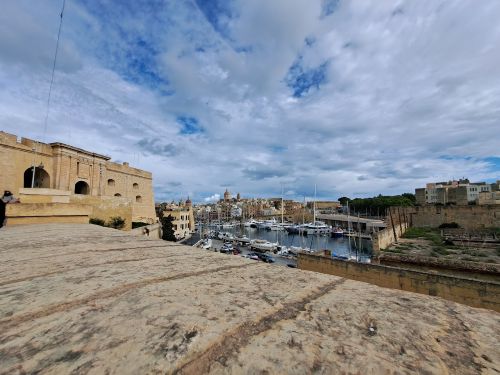
The Knights of St. John, a Catholic military order, ruled Malta from 1530 to 1798 and left behind stunning architecture, including Valletta, the capital city
I must admit, the most recent guidebook was five years old—mistake number one. In those few years, the Maltese government decided to sabotage public transport to encourage car use and profit from taxes. Picture gets cleare once you notice that Malta and Gozo have as many car dealerships as they do supermarkets. Luckily, we realized this quickly enough and, after trying to hopleslly figure out bus schedules and ticket prices the decision was easy—Bolt it is.
After three Bolt rides, we made another decision—even though we’re used to driving on the ‘wrong’ (i.e., British left-hand) side, not renting a car was safer for everyone, especially for our wallets. To quote one of our drivers, who came to Malta from chaotic London: “Traffic in Malta is more efficient when the traffic lights don’t work.”
At all other times, accidents—big and small—are waiting to happen at every turn.
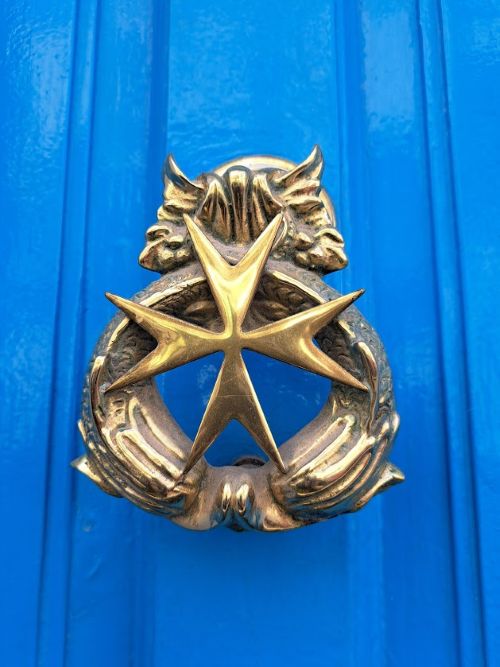

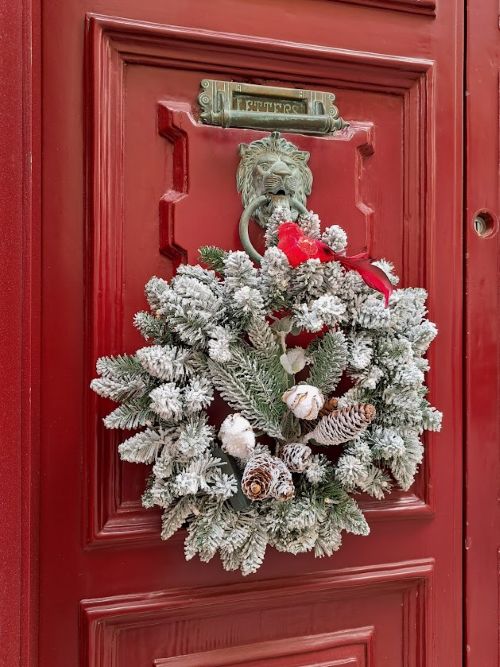
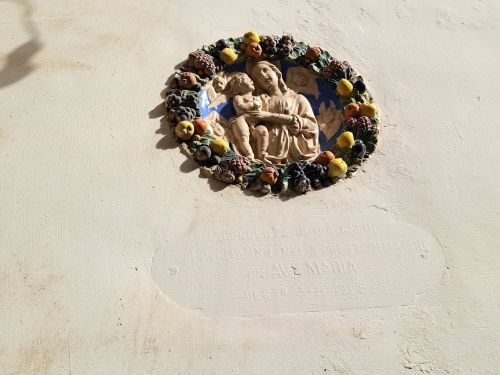
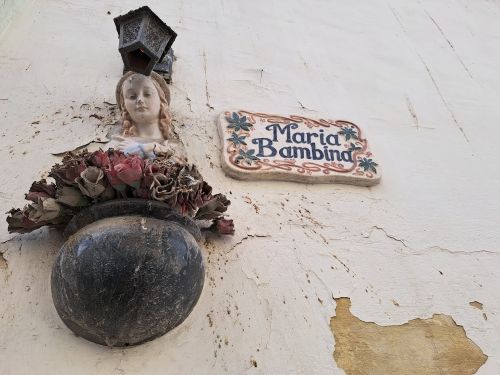
Malta was formally colonised by Great Britain in 1814, but finally became independent in 1964.
Valletta – Our First Stop
Valletta, the city where Brad Pitt bravely fled from zombies breaching the walls of film-set Jerusalem, was our first stop. Our strong desire to see the most beautiful floor in the world at St. John’s Co-Cathedral vanished as soon as we saw the queue stretching down the next street. Something about long queues just naturally made our group walk in the opposite direction. Every single time.
Luckily, we stumbled upon rollo ice cream and a pistachio cappuccino. Enough said.
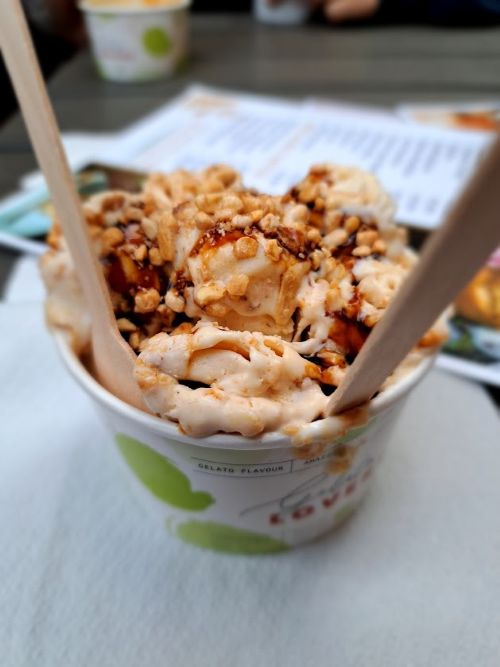
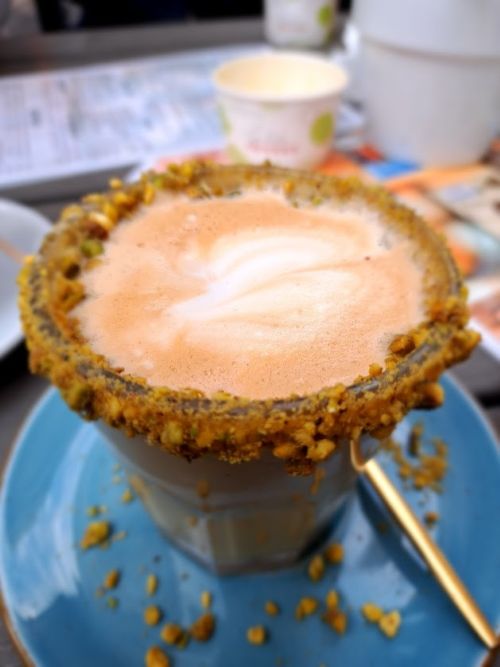
Did you know pistachios are known as “happy nuts,” representing health and happiness!
If the city’s walls and architecture hadn’t already reminded us of the fortified towns of the Adriatic, then Oliver Dragojević’s songs playing in front of a ice-cream shop certainly did. Did we sing along? Of course we did!
Next surprise inculded discovering a store stocked with Pivac products, pork cracklings, Smoki, etc. Tears in my eyes and smile in my belly? No doubt about it.
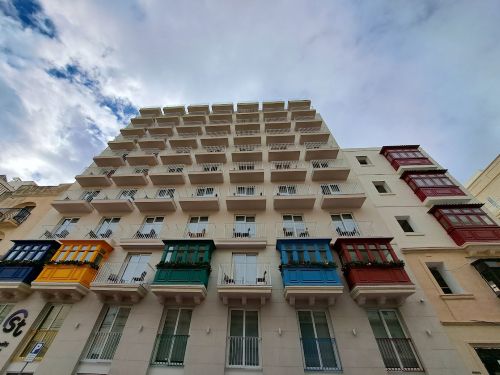
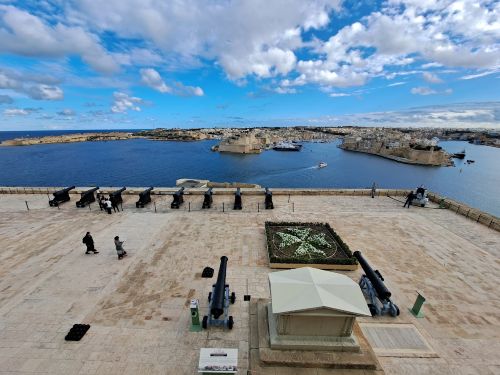
Rabbit Stew is the national dish, and Kinnie is a locally made drinkunique to Malta, which is made of soda, chinotto bitter oranges, spices and herbs. Stew we didn’t try, ergo no photos…Kinnie we liked. No explanation why we have no photos of it. 🤔
The mystery of why even the smallest shop in a remote alley stocks Argeta pâté and Poli sausage was soon solved. Out of Malta’s 500,000 residents, 10,000 are Serbs, who—like Croats in Ireland—have found higher salaries and a better life here.
Conclusion of Day One: Malta is essentially a blend of Scotland and Croatia—my two homes.
The Three Cities
Right next to Valletta are the famous Three Cities. Every guidebook and source of information emphasized the need to visit them, as they are supposedly so different from the capital that missing them would be a shame.
A few hours later, our youngest group members unanimously agreed:
“So… all these cities look exactly the same.”
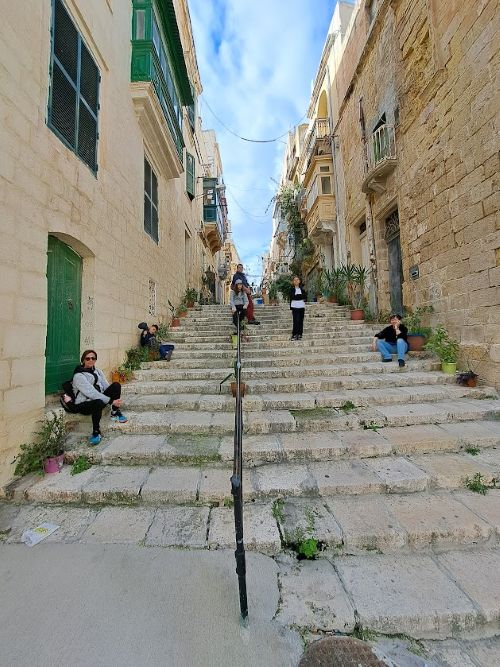
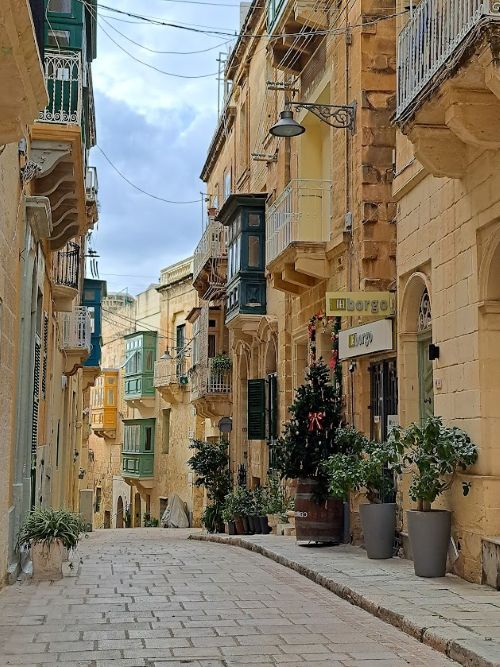
The Three Cities played a key role in the Great Siege of Malta in 1565, where the Knights of St. John and the local populations united to slow the Ottoman advance
To be clear – cities are beautiful. They feature unique closed wooden balconies in various colors with unknown origins, door handles that reveal the personalities of their residents, and an evident devotion to Christianity—every Maltese town grew around a church, and without exception, just as every house has doors and windows, each also has a saint as its protector.
But for our younger generation, it was a “see one, see them all” situation.
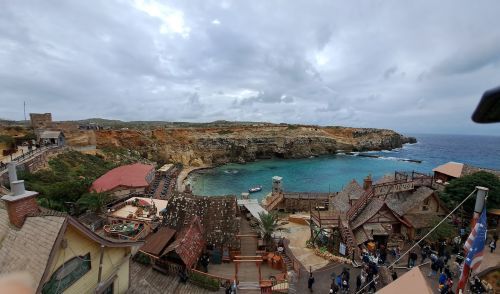
A whole village was specifically built in Malta for the musicalproduction ‘Popeye‘
Popeye’s Village – Now That’s Unique!
So, our next stop was Popeye’s Village. Now this is something truly unique!
Originally a film set for the Popeye movie starring Robin Williams, today it’s one of Malta’s most visited tourist attractions. During the Christmas season, the entry ticket included popcorn, a photo with Santa, mulled wine/cookies for the kids, and mini-golf. From a documentary on how the film was made to screenings of Popeye, live street performances, and various games for both kids and the young at heart, it’s impossible not to find something for everyone.
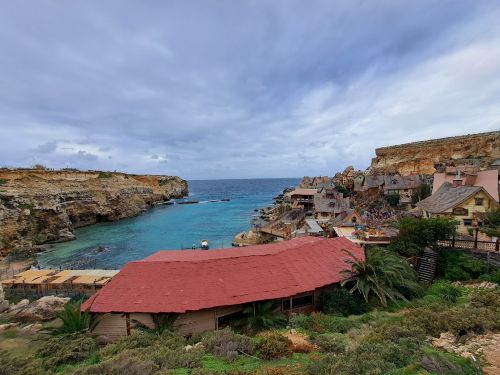
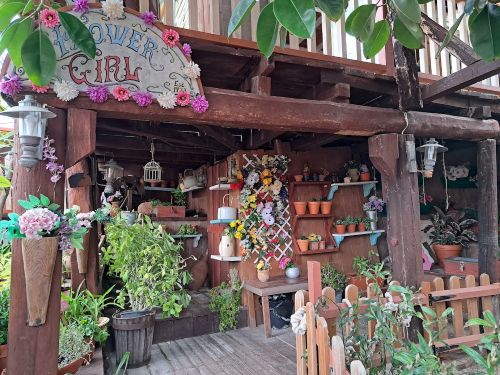
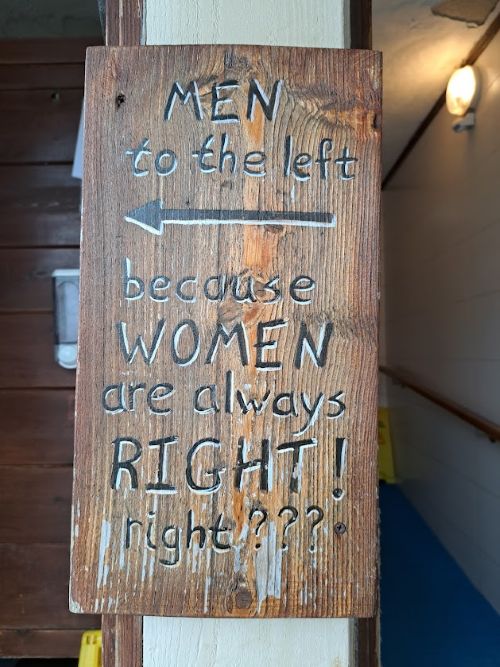
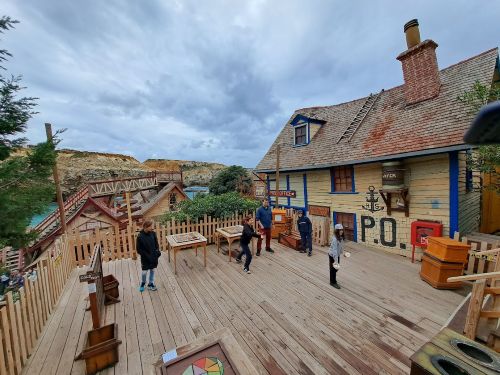
Malta has been featured in many films, Including “Gladiator,” “Troy,” and TV series like “Game of Thrones”
After Popeye’s Village, we visited a beach that many call the most beautiful in Malta. We arrived, looked around, and left—utterly confused by the rave reviews about a sandy beach by the roadside. In Croatia, we have plenty of such beaches, and we’d call them many things, but never “the most beautiful on the coast.”
When elephants roamed Malta
Pete’s Pools, however, impressed us. These natural rock formations even tempted us to jump in—until we noticed the warnings advising against swimming when the sea is rough. Especially after spotting memorial messages on the rocks dedicated to those who lost their lives here.
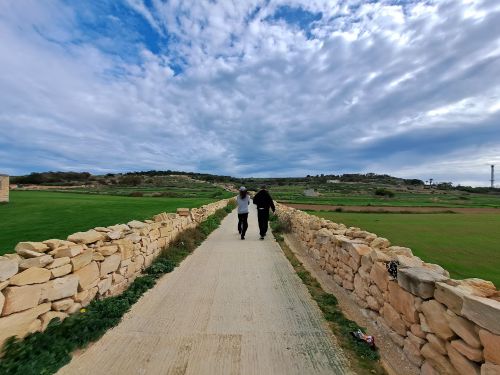
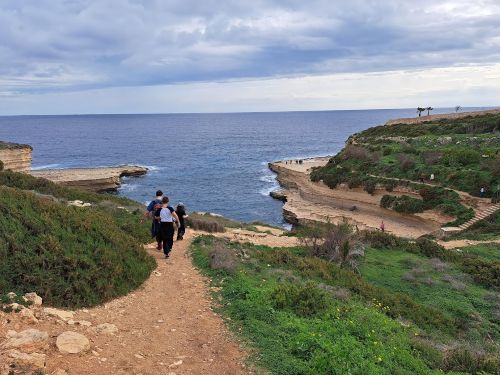
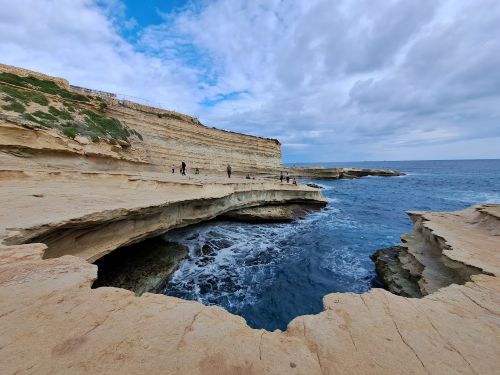
Hundreds of reefs, caves and ancient wrecks make it a diving hotspot and frequently voted one of the world’s best diving locations.
Nearby is Marsaxlokk, a fishing town where we tried everything made from Malta’s national treasure, the prickly pear cactus—liqueur, jam, juice, even chocolate and chocolate spread. Our group was divided: some loved it, others were satisfied with one bite/sip.
Malta, or “Sweet Honey,” has been ruled or besieged by various nations throughout history—Romans, Greeks, British, Italians, French, Turks… and it seems to have absorbed a piece of each culture, preserving it to this day.
This is evident, among other things, in the tradition of painting fishing boats in bright, vibrant colors. In this small fishing town, these boats are everywhere, offering stunning photo opportunities and ensuring that Marsaxlokk leaves a lasting impression to those who come to visit.
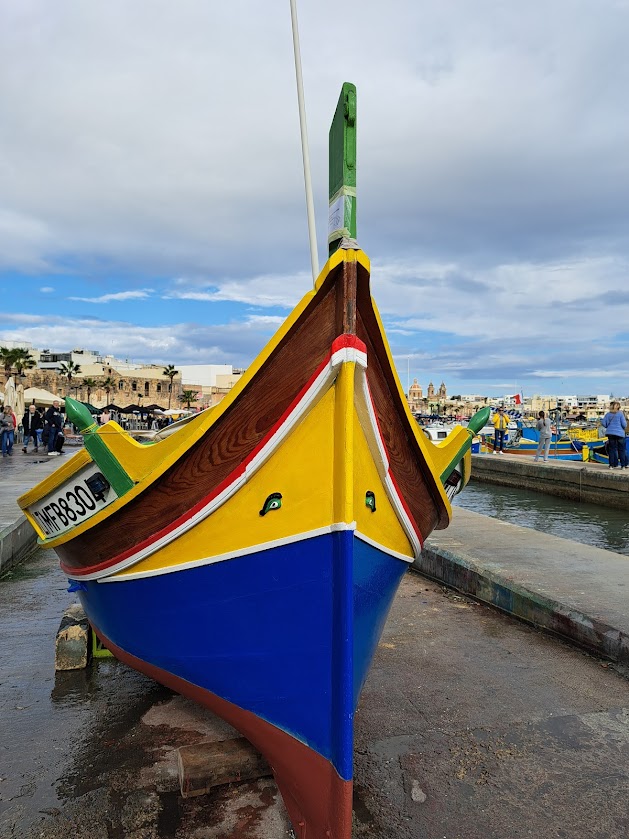
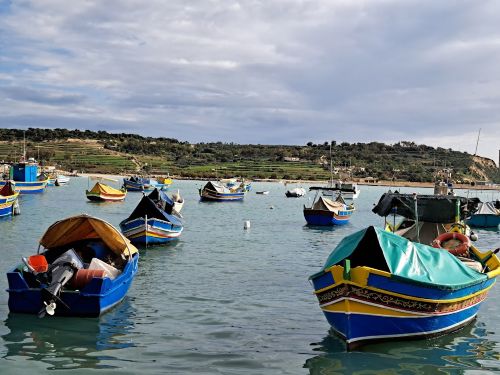
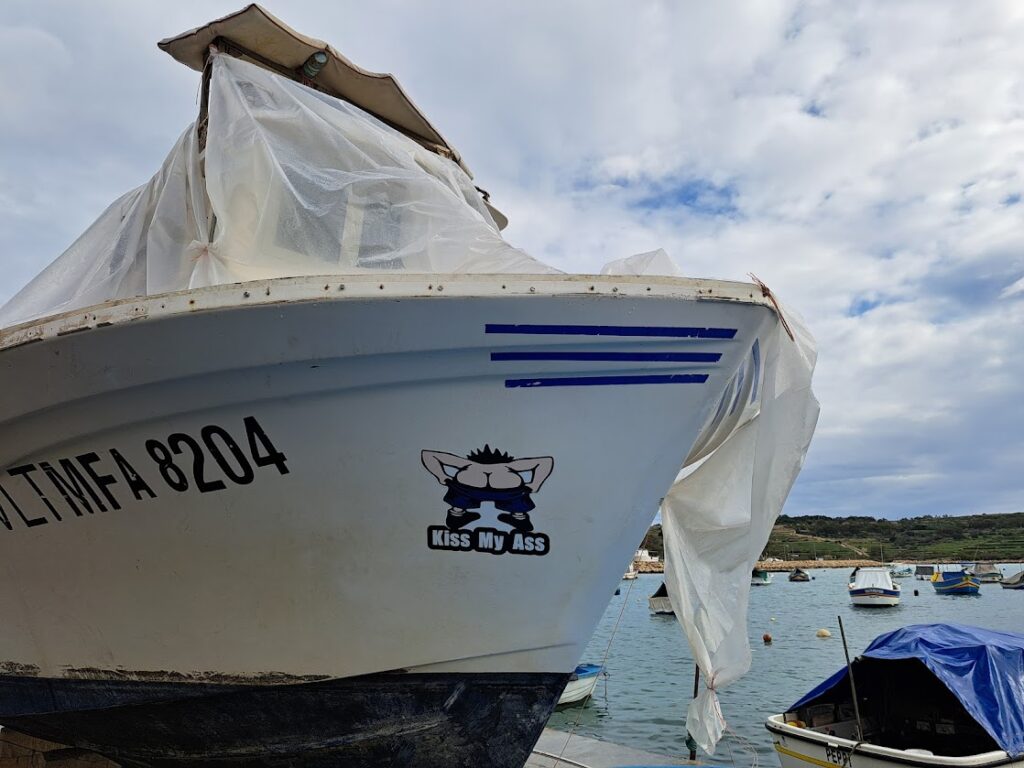
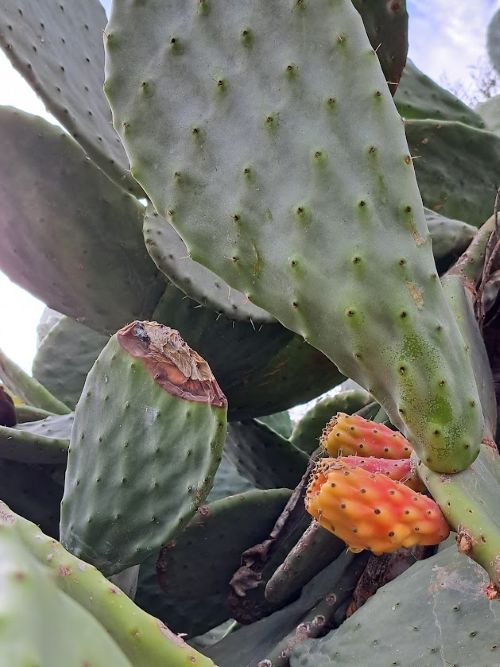
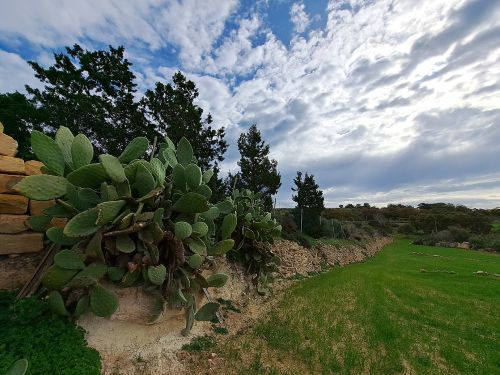
There are no forests, mountains or rivers in Malta. There is however prickly pear 😊
To look deep, and I mean deeeeep into Malta’s history we visited the Għar Dalam Cave and its Museum. archaeological site that holds traces of Malta’s first inhabitants and offers fascinating insight into the island’s ancient past. The cave reveals evidence of prehistoric life, including the bones of animals that once roamed the island. The animals that arrived in Malta, such as elephants and dwarf hippopotamuses, likely migrated from Sicily during periods when sea levels were lower. This happened thousands of years ago during ice ages when the Mediterranean Sea was much shallower, allowing land bridges to form between the islands.
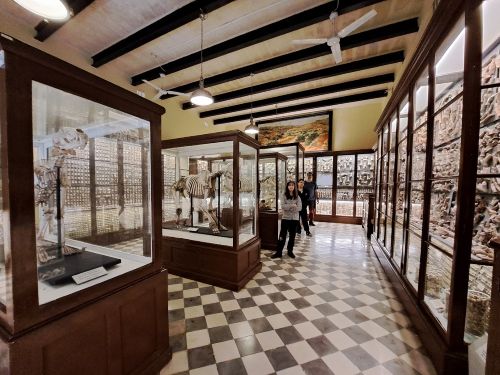
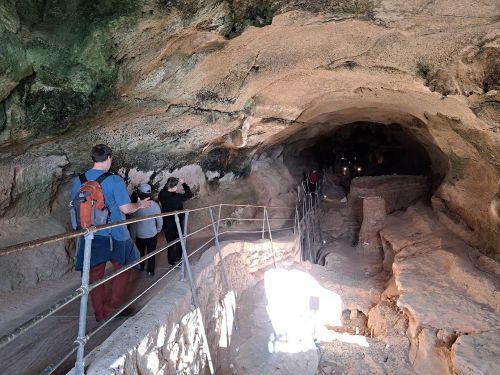
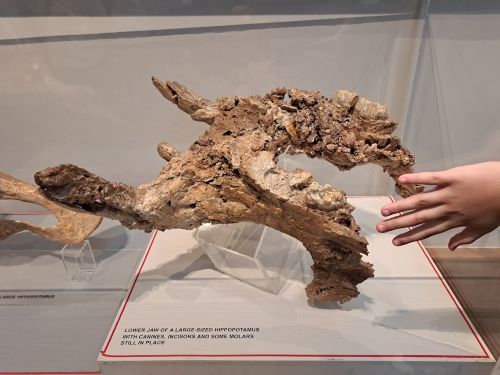
Malta was once part of Sicily 😮
Over time, as the ice melted and sea levels rose, isolating Malta from the rest of the Mediterranean. Animals adapted to Malta’s limited resources and environment. As food became scarce, they evolved to be much smaller, a phenomenon known as “insular dwarfism.” Some species, like the elephants, or the dwarf hippopotamus, eventually disappeared completely. The cave also contains the earliest evidence of human presence on the island, marking it as a crucial location for understanding Malta’s prehistoric fauna and the early human settlement.
Gozo & Comino
Malta isn’t just one island—Gozo and Comino are part of it too.
We reached Gozo by a fast ferry. Our main stops for the day: Victoria and the Citadel, a famous sanctuary Ta’ Pinu, and the island’s most beautiful beach.
When asked, our under-18 travel companions felt it was “just more towns like the first one.”
However, the older crowd noted a more relaxed atmosphere, cheaper prices compared to Malta, and that Victoria’s main square felt more like Cuba than the Adriatic. Souvenir shopping? Gozo is the place.
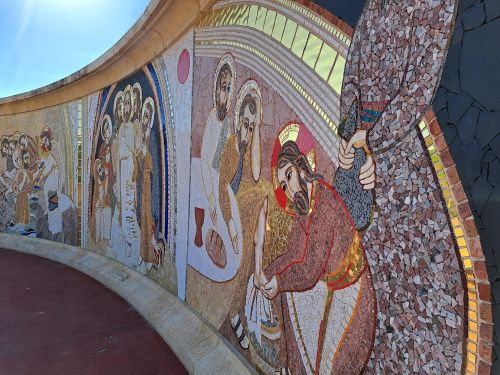
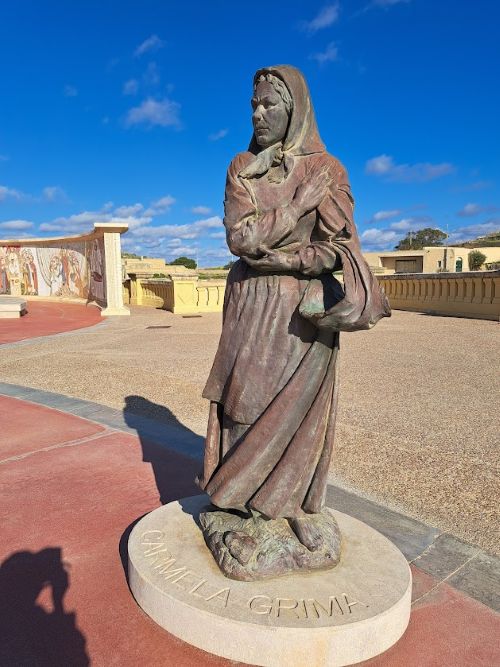
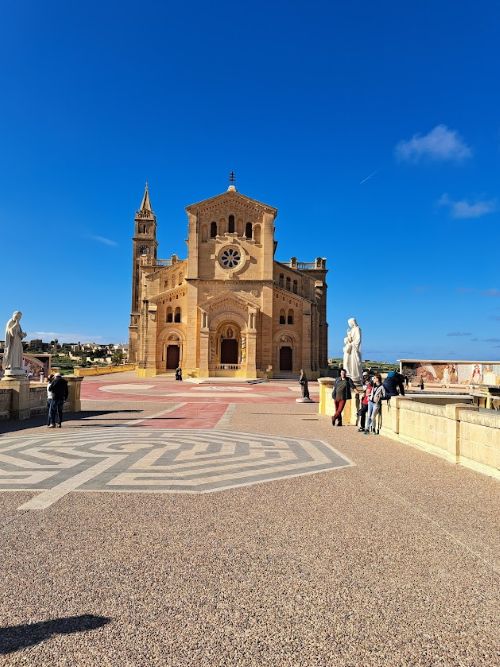
In Malta there are 359 churches. Almost one for each day of the year
My personal favourite – The Shrine of Our Lady of Ta’ Pin. Legend tells of a local woman, Karmni Grima, who heard a mysterious voice from a painting of the Virgin Mary urging her to pray. The voice instructed her to recite three Hail Marys in honor of the Virgin Mary’s three days in the tomb before her Assumption, sparking a wave of devotion and reports of miraculous healings.
This led to the construction of the grand Romanesque-style Basilica of Ta’ Pinu, completed in 1932. Over the years, it has been visited by Popes, including John Paul II, who adorned the image of Our Lady with golden stars, and Pope Francis, who left a golden rose. Today, Ta’ Pinu remains a deeply significant spiritual site for Gozitans, Maltese people, and pilgrims worldwide, symbolizing faith, healing, and divine intercession.
Comino, home to only three people, famous for its azure waters and temperatures over 45C in summer, we left for another time.
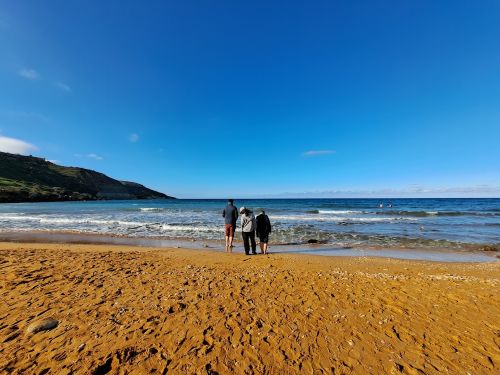
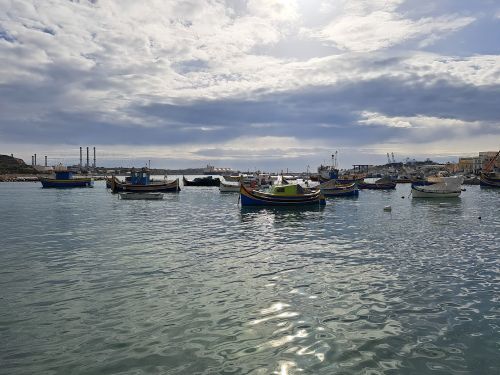
They filter their drinking water straight from the sea, as it is their only source of freshwater. In other words – tap water is kind of safe but not recommended.
Mdina – The Last Stop
On our last day, we gave one more chance to guidebook authors, bloggers, vloggers, and TikTokers, all of whom had been convincing us that every corner of Malta is unique and unmissable.
Our target: Mdina, the original capital before the Knights of St. John moved it to Valletta.
Children would surely be intrigued by the dungeon and catacombs, and there would be something of interest for us as well.
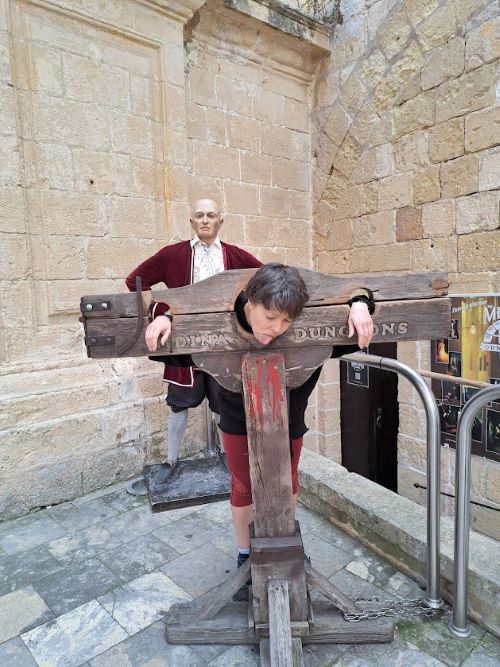
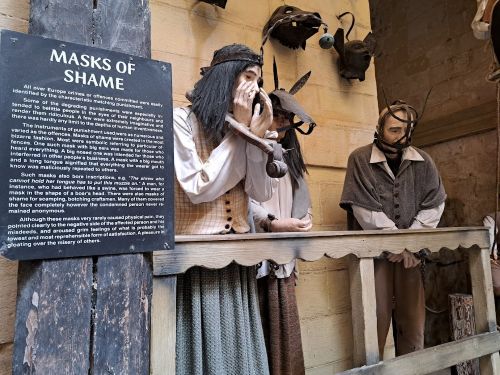

Mdina earned its nickname “The Silent City” due to the lack of car traffic (except for residents, emergency vehicles, and wedding cars)
The visit to the dungeon, however, was exceptionally brief. We entered, saw two displays of brutal torture that made any sane mind battle between nausea and shock, and within moments, the two youngest in our group had rushed back outside into the daylight—certain that they would be haunted by nightmares for weeks, and perhaps even require professional help later in life.
I don’t want to spoil the surprise for anyone, and I’ve never had an issue with museums of this kind before, but at several points, we each concluded: too far. However, an interesting historical detail that we hadn’t encountered elsewhere is that Malta was often used by its occupiers as a place of exile for prisoners and criminals—so it seems they were particularly creative when it came to torture methods.
After that experience, we decided to skip the catacombs. Craving some greenery—something quite rare on the island—we left Mdina for Naxxar. There, we arrived at the palace and gardens that look stunning in photos but, unfortunately, were closed. At the very least, we discovered Malta’s version of KFC—CFC—where the crispy fried chicken stands out with significantly larger portions and lower prices than its famous counterpart.
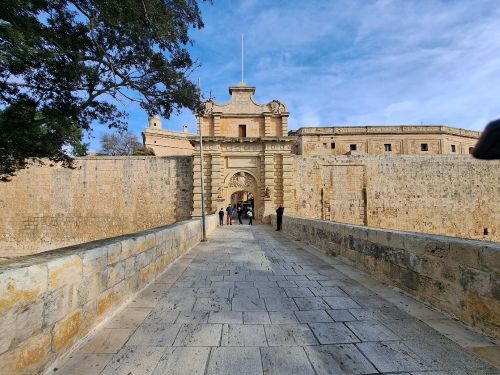
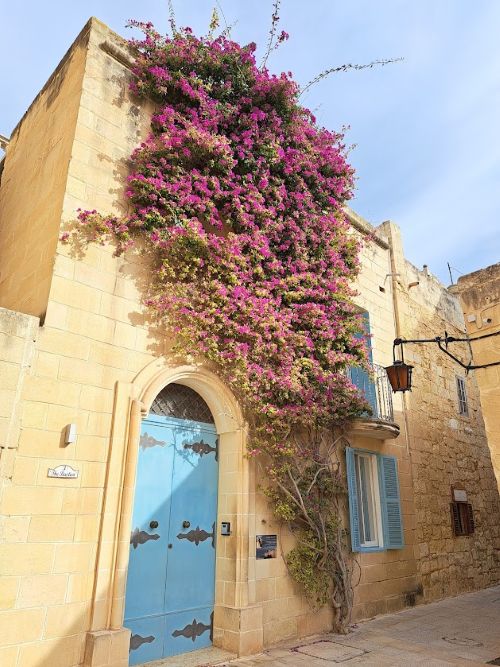

The entire Maltese Archipelago could fit into the city of Madrid with room to spare
Final Thoughts
We really liked Malta, especially the gentle warmth of its 18°C in January.
The locals told us about the 45°C it reaches in summer, combined with high humidity—definitely enough to discourage us from visiting when the sea is warmer. After all, compared to Scotland, even now the sea felt like it does back home in August.
They also complained that this was the “dead season” because it was winter, while we were amazed by the crowds of tourists—comparable to what we see on the Adriatic in June. More than once, we found ourselves wondering: Why does our tourist season last only four months, while in Malta, it lasts the whole year?
We also liked how most of the people we interacted with were laid-back. The only thing that puzzled us was the fact that English is an official language here, yet more often than not, we struggled to understand our conversation partners.
But the biggest mystery after this trip remains—where will we find a reliable source of information for our next adventure?

